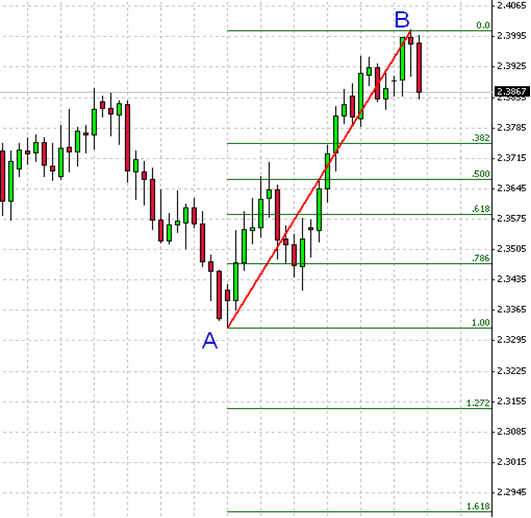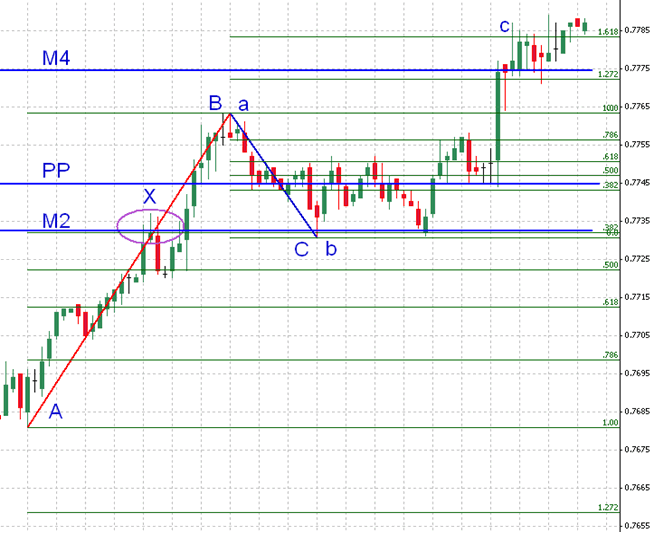Forex Trading Articles
USING FIBONACCI RATIOS FOR FOREX TRADING
(Part II)
By Dick Thompson for Forexmentor.com
©2007, Currex Investment Services Inc.
January 10, 2007
In Part I we introduced the Fibonacci ratios and we showed two examples of price trending to a point of reversal and then retracing an amount equal to a Fibonacci ratio. The Fibonacci data on these charts was drawn by tools on my charting software. Almost all charting software, with some variation, has a tool for overlaying a Fibonacci map on a chart. This map will then show the levels that correspond to the various Fibonacci ratios. Lets look at the daily chart of the GBP /CHF:.

Figure 1
Most tools are used by simply dragging the cursor from the start of a significant swing, point A, to the point of reversal, point B, from where the tool then lays down the various Fibonacci retracement levels on the chart, from .382 to .786. (Some software will use percentages; i.e. 38.2 to 78.6.)
If price refuses to stop at a retracement level and moves past the beginning of the swing (level 1.00 on Figure 1), we call this movement an Extension. In Part I of these articles, I described the primary Fibonacci Ratios; two of those 1.272 and 1.618 are the extensions in Figure 1 above. It is common practice to also use 2.0, 2.272 and 2.618 as Fibonacci extensions. 
Figure 2
How do we trade Fibonacci ratios? Consider the hourly chart of the AUD /USD from November in Figure 2 above. We observe an uptrend in place and knowing that we should trade the dips in an uptrend, we note the retracement forming at point B. The question of course is, where to enter the trade? Where is the retracement going to stop and the trend resume? By applying our Fibonacci tool from the swing low at point A up to the retracement point B we are able to identify all of the retracement ratios. We note that there is a confluence of support at the .382 level; the daily M2 pivot and the recent resistance at X (which becomes support after breached). So, we decide to place our entry at point C, the .382 retracement. We find that this support level holds and after sweating it out for over 15 hours, our trade finally takes off. This being an M2/M4 day, we decide to hold out for a profit near M4. In fact, the move actually goes as far as the 1.618 Fibonacci extension of the a-b-c pattern shown.
There are many ways to incorporate the Fibonacci ratios into our trading. We are limited only by our imaginations. I have shown one use here. In subsequent articles, I will describe Fibonacci patterns and how they can be used to find potential trades. (see Part III)
Index of Other Forex Trading Articles
"I feel totally empowered and humble all at the same time. If everyone learned from you guys, it might get a lot more difficult to make money in the Forex. Last week, using Chris's basic guidance I captured 300+ pips"
- Darryl Warren - Lompoc, CA

FOREXMENTOR PRO TRADER ADVANCED FX COURSE
Full Content Summary
|
